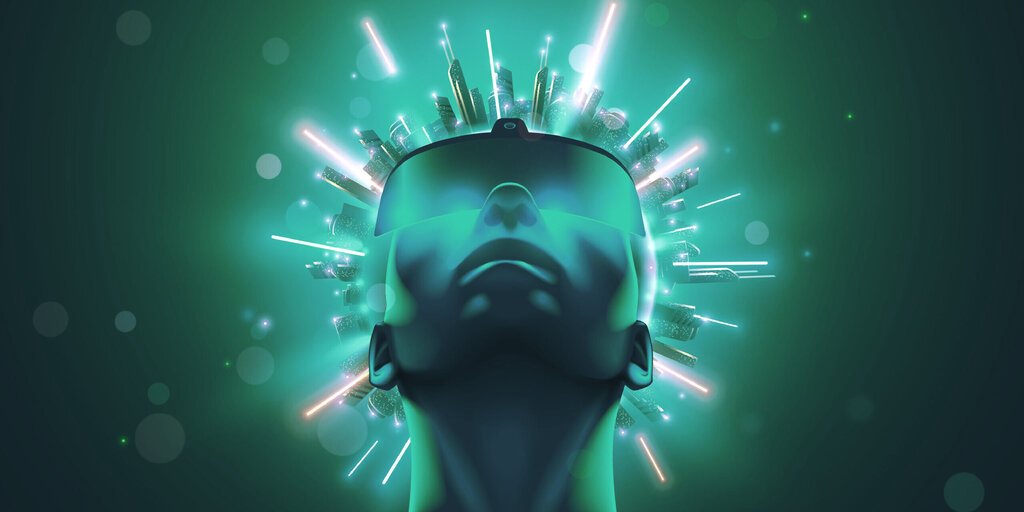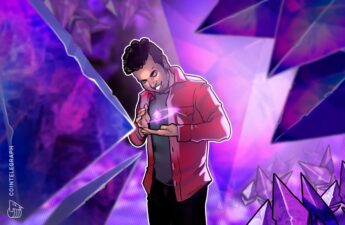The metaverse is coming, and it’s set to revolutionize the way we work, play and interact with each other.
A persistent digital world, the metaverse has already attracted billions of dollars of investment from tech giants like Meta (née Facebook) and Microsoft. But efforts by legacy players to shape the direction of the metaverse could fall flat; indeed, anyone who claims to know with any degree of certainty exactly what the metaverse is or will be… doesn’t.
“They may be right, they may be wrong, but it’s important to realize that no one knows for sure,” said Matt McGuire, CTO of Caduceus, the first open blockchain dedicated to metaverse development.
A few things are certain, though; as the metaverse evolves, a lot is going to change over the next few years. And creators and designers will need new tools to help usher it into being.
Changing perceptions
Right now, we’re in the metaverse’s innovation phase, McGuire said.
Companies like Caduceus are creating the technology and laying the foundations that developers will build upon to create the next generation of the metaverse—the one that will achieve mainstream adoption.
But to get there, and to attract traditional businesses to the space, the market needs to get educated about the value of blockchain, including its speed and efficiency, said Caduceus CEO Tim Bullman.
“We’ve spent too long with crypto and blockchain being viewed as mechanisms to support nefarious activities,” Bullman told Decrypt. “Over the next two years, we’re going to start seeing more people really understand the benefits.”
Gotta look good
But beyond evangelizing, the best way to change perceptions is to perform.
Nearly every phase of the internet’s development has been about helping people to communicate in richer, more engaging ways, from email to instant messaging to social networking, Slack and Zoom.
As to how the metaverse will change the way we communicate, “We’re not claiming to know the answer,” McGuire said. “But we are willing to bet that people will continue looking for new, modern ways to interact, and that it will probably require high computational processing, decentralized edge rendering and a scalable blockchain network.”
“We’re giving designers and creators the tools to do what they do.”
—Matt McGuire
These new technologies are the key pillars that will support the future metaverse. In order to create experiences that are interactive and realistic enough to connect with mainstream audiences, developers need technology that allows them to rapidly transmit large amounts of data at super-low latency.
Basically, it’s got to look good and feel immersive, whether that means a 3D environment peopled with realistic avatars, or tens of thousands of people interacting in cyberspace, or some kind of mixed reality version of Instagram.
Decentralized edge rendering, in which processing of graphical data is distributed to the fringes of the network rather than in centralized servers, enables increased graphical fidelity and reduced latency for users, without requiring them to invest in expensive graphical hardware. That means designers can get on with the business of creating a realistic metaverse, without worrying about whether, or how, users will be able to access it.
“We’re giving designers and creators the tools to do what they do,” McGuire said. “We’re the enablers of what’s to come.”
Those creators and designers are already making use of Caduceus’ tools. Hollywood film producer Ivan Atkinson, whose company One Van Films produced features including Aladdin, The Gentlemen and Wrath of Man, has teamed up with 3D metaverse platform Light Cycle to launch a new NFT and DAO project in the Caduceus ecosystem.
The project will enable film fans to own tokenized moments from films and interact with films as they watch them, for example by choosing a different outcome for the narrative.
Coming soon
And what’s to come—a truly decentralized metaverse—will only materialize when the underlying infrastructure is robust enough to support the sort of experiences that can attract and retain mainstream users and appeal to traditional businesses.
And for that to happen, three things are necessary: the development of a decentralized network, multi-chain interaction and the ability for people to own their own information.
“That way it’s not all about these giant big tech companies that control your data and profile you,” McGuire said. “People will have access to their data and be able to revoke that access, which goes hand in hand with the concept of a decentralized network.”
This all has to happen seamlessly, though, and without onerous gas fees. The metaverse isn’t going to take off if people have to pay every time they want to perform a function on the blockchain.
“You need the transactional costs to be comparable to a web API, which doesn’t cost the user anything,” McGuire said. “If not, why would anybody use blockchain?”
And we are getting close, he said.
“Over the next 18 months, we’re going to see rapid progress through the early adopters phase as all of this starts to hit the early majority,” McGuire said. “Two years from now, you’ll see somewhere between 10% and 18% of companies with some form of blockchain-related project happening.”
From merge to metaverse miners
Sooner than that, though, there’s a big question mark on the horizon for Ethereum miners in the leadup to the network’s much-anticipated merge.
The change from a proof-of-work consensus mechanism to proof-of-stake is set to make Ethereum miners redundant. That will free up their expensive GPU mining rigs for new applications—like powering Caduceus’ decentralized crowd rendering network.
GPU computing power is the core element of the Caduceus business development strategy.
It provides an equal opportunity for anyone to share their GPU power and offer their rendering service to filming, gaming, AI and many other sectors. #Caduceus #Metaverse #Web3
— Caduceus (@Caduceus_CMP) August 20, 2022
“There’s a lot of revenue potential there for them,” McGuire said. Miners receive Caduceus Metaverse Protocol (CMP) tokens in exchange for the use of their computational resources to support everything from raw graphics processing for video to games engine processing.
Part of the jigsaw
That network of miners is key to Caduceus’ vision of a decentralized metaverse—something that’s vital if the metaverse is to avoid the same fate as Web2, where big tech giants harvest user data for their own ends.
“We’ll have to see how this all plays out, but I think we’re going to end up with a shared data experience,” McGuire said. “And that’s down to the creators—to the people who bring the vision to life.”
That’s not to say there won’t be centralized metaverses. In fact, there very likely will be, just like today where we have an open web and centralized social networks. But the big tech firms that dominate the Web2 ecosystem may not be the power players of the metaverse. “Just because a company changes its name to include the word ‘meta,’ doesn’t mean it knows what’s coming in the future,” McGuire said. “That’s like changing your name to ‘Internet Company’ in 1998. [It] doesn’t mean you’re going to be the next Amazon or eBay.”
Ultimately, decentralization is the only viable model for the metaverse, Bullman added, because no single entity will have the power to govern the experience.
“No one individual or even collective of people can really stamp their mark on it too much,” he said. “This is about providing one part of the jigsaw and hopefully becoming one part of the cohesive story.”
Sponsored post by Caduceus
This sponsored article was created by Decrypt Studio. Learn More about partnering with Decrypt Studio.
Stay on top of crypto news, get daily updates in your inbox.
Source: https://decrypt.co/108033/the-metaverse-the-next-2-years-and-beyond


